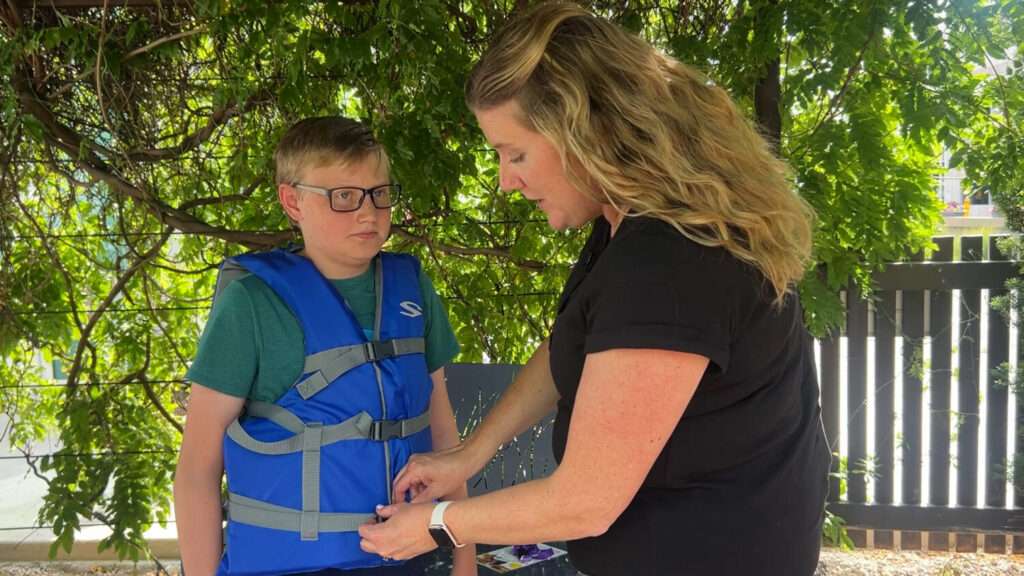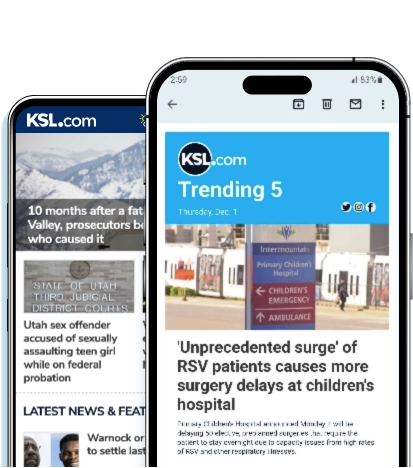- Heber City Mayor Heidi Franco and her husband Leno are urging water safety this summer.
- They especially emphasized using life jackets, after their son drowned at Deer Creek Reservoir in 2011.
- Primary Children's Hospital's Michelle Jamison advocates for early water safety education.
HEBER CITY — As summer temperatures climb and Utahns head to lakes and reservoirs to cool off, one family is sharing their heartbreak to prevent others from experiencing the same tragedy.
Heidi Franco, mayor of Heber City, and her husband, Leno, lost their 17-year-old son, Kalem, to a drowning accident at Deer Creek Reservoir 14 years ago. Now, they're using his story to spread a lifesaving message: Wear a life jacket.
"Kalem was always very well-liked," said his father, Leno Franco. "He always took care of people. I've seen him many times have a kid on his shoulder, walking him home because the kid was lost. He was that type of person."
"He loved life," said his mother, Heidi Franco. "He liked to have fun."
Kalem, a multisport athlete, was going into his senior year of high school and had dreams of playing college football. Then, one summer day at the lake changed everything.
"I got a phone call from my daughter saying, 'Hey, I can't find Kalem.' I said, 'What do you mean, you can't find Kalem?'" Leno recalled.
Kalem had been swimming at Deer Creek with family and friends. At one point, he cramped up in the cold water and went under.
"They didn't have two life preservers. I don't know why, but they only had one. And so, Kalem allowed his younger brother to wear the life preserver," Leno Franco said. "Kalem started to struggle. He let go of his brother, who had the life preserver, and drowned there on the spot."
Kalem never resurfaced. Search and rescue crews found his body about an hour later.
"It happened so fast," Heidi Franco said. "That was tough."
Despite being a strong swimmer, Kalem was no match for the unpredictable conditions.
"It wasn't that deep, and he was strong. He just needed that life preserver," Heidi Franco said.
One of the leading causes of death for kids and teens
In Utah, an average of 31 people drown each year. According to the Utah Department of Health and Human Services, 70% of those deaths occur between May and August.
Michelle Jamison, a community health program manager at Primary Children's Hospital, says drowning can happen to anyone — and often happens when people least expect it.
"Wearing a life jacket is always a good idea," Jamison said. "Sometimes it's colder than they think, the distance is farther than they think, maybe they're a little more tired, a little more dehydrated than they think — all of those things can be factors that come into play that can get those kiddos into trouble really quickly."
Jamison demonstrated how to properly fit a Coast Guard-approved life jacket: It should be snug, and when the shoulder straps are lifted, it shouldn't rise above the wearer's ears. If it does, the jacket either needs to be tightened or exchanged for a smaller size.

She says safety expectations need to be set early on.
"Having those conversations that this does happen, and believing that it can happen to you," she said. "So many of the kiddos in Primary Children's — their parents never thought it would happen to them. And it did."
The Francos agree. They urge families to prepare their kids for what to do around water, well before they're in it.
"We just really want parents to talk to their kids before kids are in situations like that," Heidi Franco said. "You just never know when that child may not be there, so take that time to keep them as safe as you can."
Primary Children's Hospital donated more than 1,000 life jackets to Life Jacket Loaner Stations throughout the state. They're available on a first-come, first-served basis at many lakes and recreation areas, including Lincoln Beach, Lindon Marina, American Fork Marina, and Utah Lake State Park.
Additional water safety tips from Primary Children's Hospital:
- Appoint a responsible adult as a dedicated "water watcher." Use a visual cue, like a lanyard or hat, to identify them.
- Drain kiddie pools, buckets, and tubs when not in use.
- Never leave a child unattended in a bathtub.
- Ensure everyone in the family learns to swim.
- Secure pools and hot tubs with self-closing, self-latching gates.
- Teach kids to avoid bodies of water while hiking or camping.
- If a child goes missing, check water sources immediately.
- If a child falls into rushing water, call 911 — don't jump in.
- Learn CPR and basic first aid.









